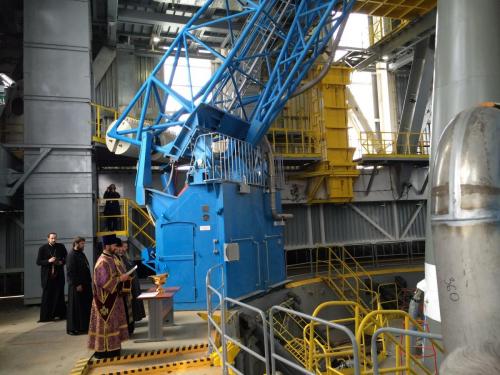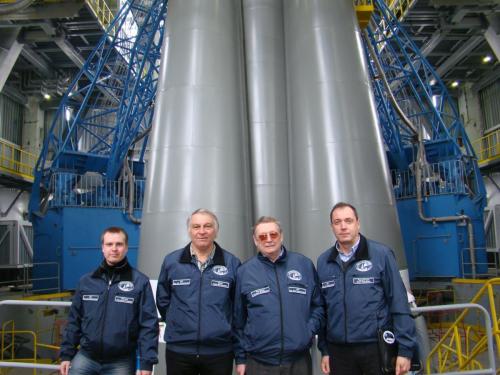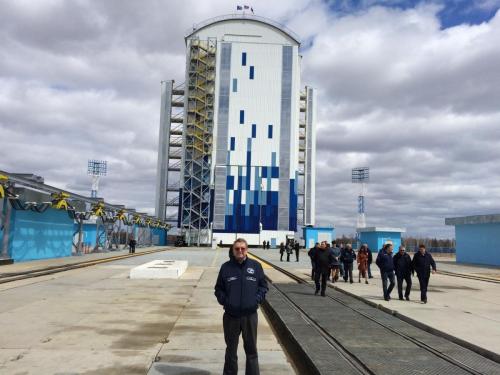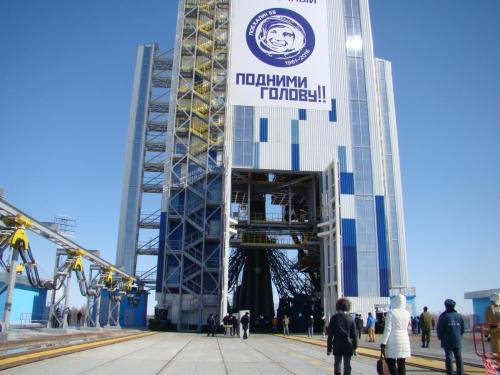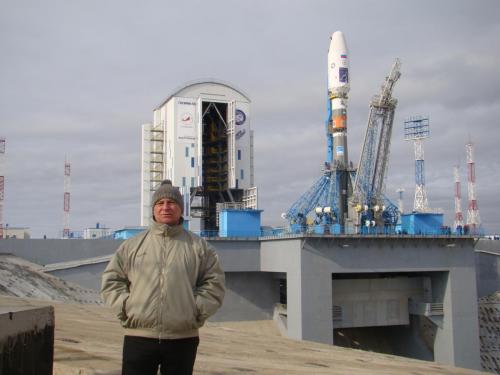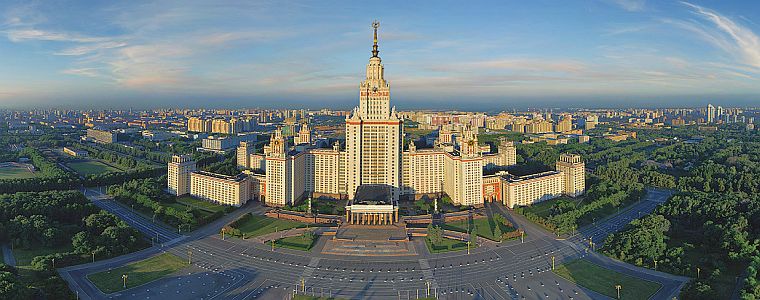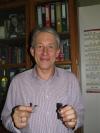In 2015, Russian billionaire Yuri Milner founded Breakthrough Initiatives with the intention of bolstering the search for extra-terrestrial life. Since that time, the non-profit organization – which is backed by Stephen Hawking and Mark Zuckerberg – has announced a number of advanced projects. The most ambitious of these is arguably Project Starshot, an interstellar mission that would make the journey to the nearest star in just 20 years.
NewsCosmodrom “Vostochnyi”“Soyuz 2-1” launcher with “Lomonosov” satellite have been delivered to the launch site and installed there for the further operations before the launch, which is scheduled now for April,27, 2016 at 11a.m. local time (5 a.m. Moscow time). 25 of april four SINP MSU people (M. Panasyuk, I. Yashin, V. Petrov, O. Peretyat’ko) visited launch site during the special ceremony of sanctification. You can find videos from cosmodrom here: https://www.facebook.com/sinp.msu/
XLVI International Tulinov Conference on Physics of Charged Particles Interations with CrystalsXLVI International Tulinov Conference on Physics of Charged Particles Interations with Crystals (ITC-16), Moscow, 31 May– 2 June 2016 г. More information at http://danp.sinp.msu.ru/tulin_conf.htm
Why Europe will soon be cold?What is the climate waiting for Russia and Europe in 15-20 years? Will be there weather abnormalities in the coming decades? Will some areas experience more severe winter, while the others will have hot summer? It all depends on how much the climate will be affected by the dynamics of the possible onset of minimum solar magnetic activity. The Sun's behaviour in future cycles is the main theme of a publication on the forecast and explanation of the minima of solar activity. The paper was prepared with contributions from Elena Popova from the Skobeltsyn Institute of Nuclear Physics (Lomonosov Moscow State University) and was published in Scientific Reports. Scientists monitor the influence of black carbon on climate in the Russian ArcticInstrumentation for aerosol monitoring and characterization has been developed by a research team of SINP MSU leading by Dr. O. Popovicheva. In October 2015 new aerosol technology was successfully implemented onboard the research ship “Akademik Trechnikov” of the Arctic and Antarctic Research Institute (AARI) during the marine arctic Expedition Sever -2015. SINP scientists celebrate the 57-th anniversary of the first scientific instruments' space launchOn November 3, 1957 SINP scientists launched scientific instruments to space for the first time in the world. The instruments were mounted onboard the second Earth's satellite. Onboard this satellite the first living being - dog Laika - was also launched to space. Russian Titanium will help in searching for dark matterIt is possible to produce Titanium with ultra-low content of radioactive elements undustrially. Russian scientists concluded it after detailed research. Produced Titanium can become an innovative low-background structural material for perspective detectors of dark matter and other low-background experiments. SINP scientist Alexander Chepurnov initiated a project on the search for new structural materials for dark matter detectors in collaboration with the Russian scientists from the Institute for Solid State Physics RAS, D.I.Mendeleev Russian CHemical and Technological University, N.E.Bauman Moscow State Technical University and specialists from Solikamsk Magnesium-production Plant. Memorandum of understanding is signed by proncipal investigators of space experimentsMemorandum of understanding on cooperation in the field of studies of terrestrial gamma-flashes, transient luminous events and gamma-ray bursts is signed by principal investigators of space experiments RELEC and AGILE - Mikhail Panasyuk, SINP Director, and the scientist of the Institute of space astrophysics and space physics of the National Astrophysical Institute (IHAF/IASF - Rome, Italy). RELEC experimental equipment onboard VERNOV satellite detected two gamma-ray burstsProfessor Anatoly Iyudin, the Head of the Extreme Universe Laboratory of SINP MSU, responsible for the analysis of the RELEC data in gamma-range told at the SINP seminar on December 10, 2014: "Gamma-ray bursts detection provides an opportunity for analyzing of rate of star formation at different stages of our Universe development, including early stages, when the first stars were formed." |




